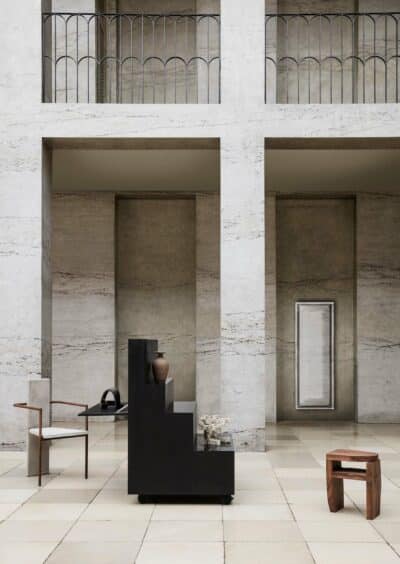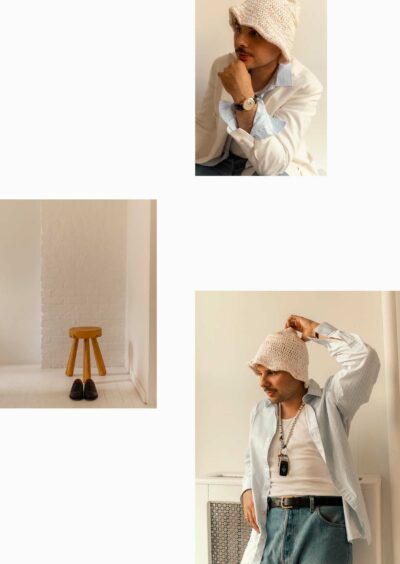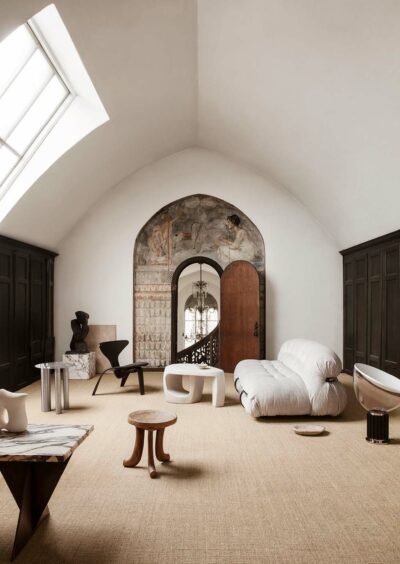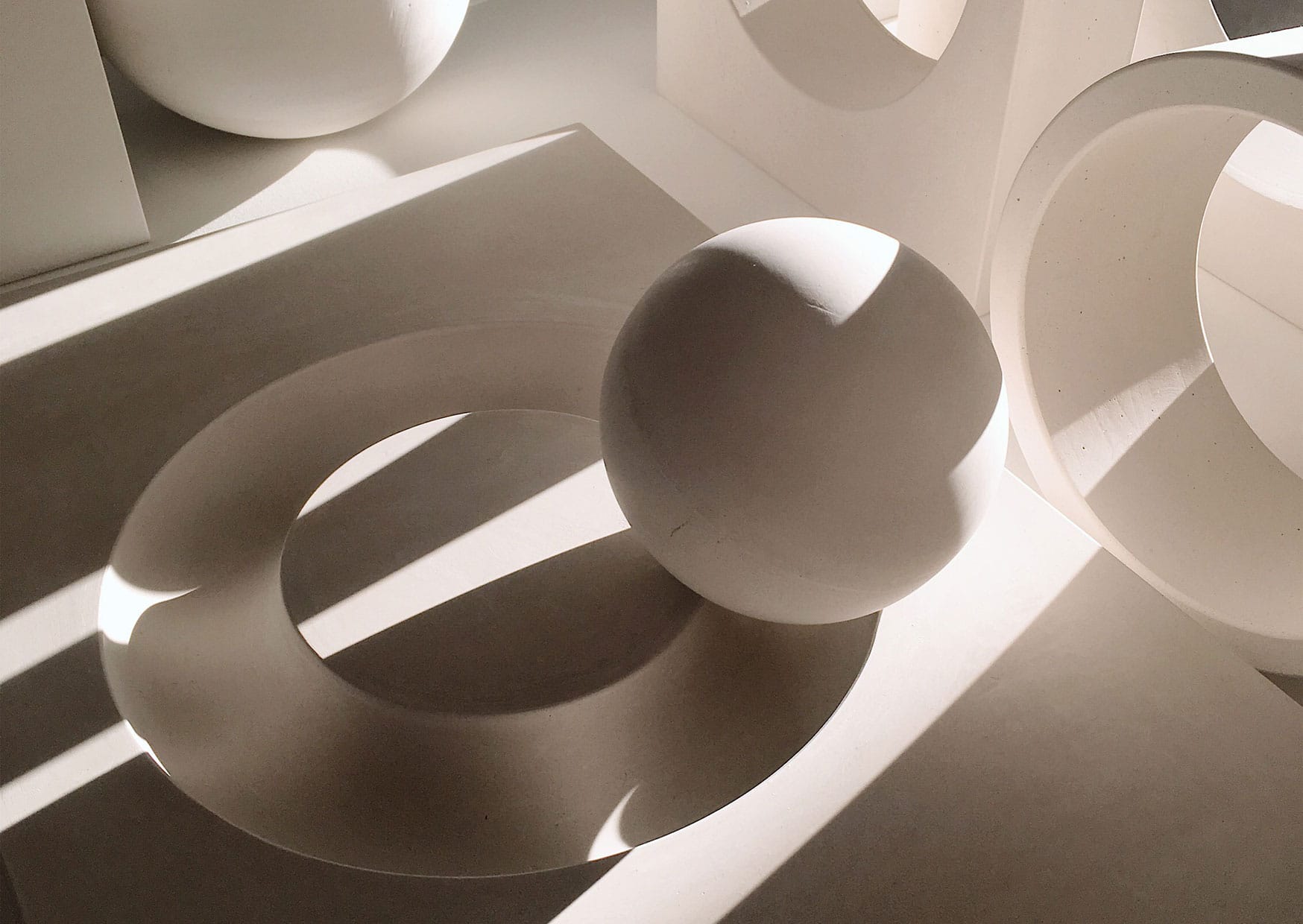
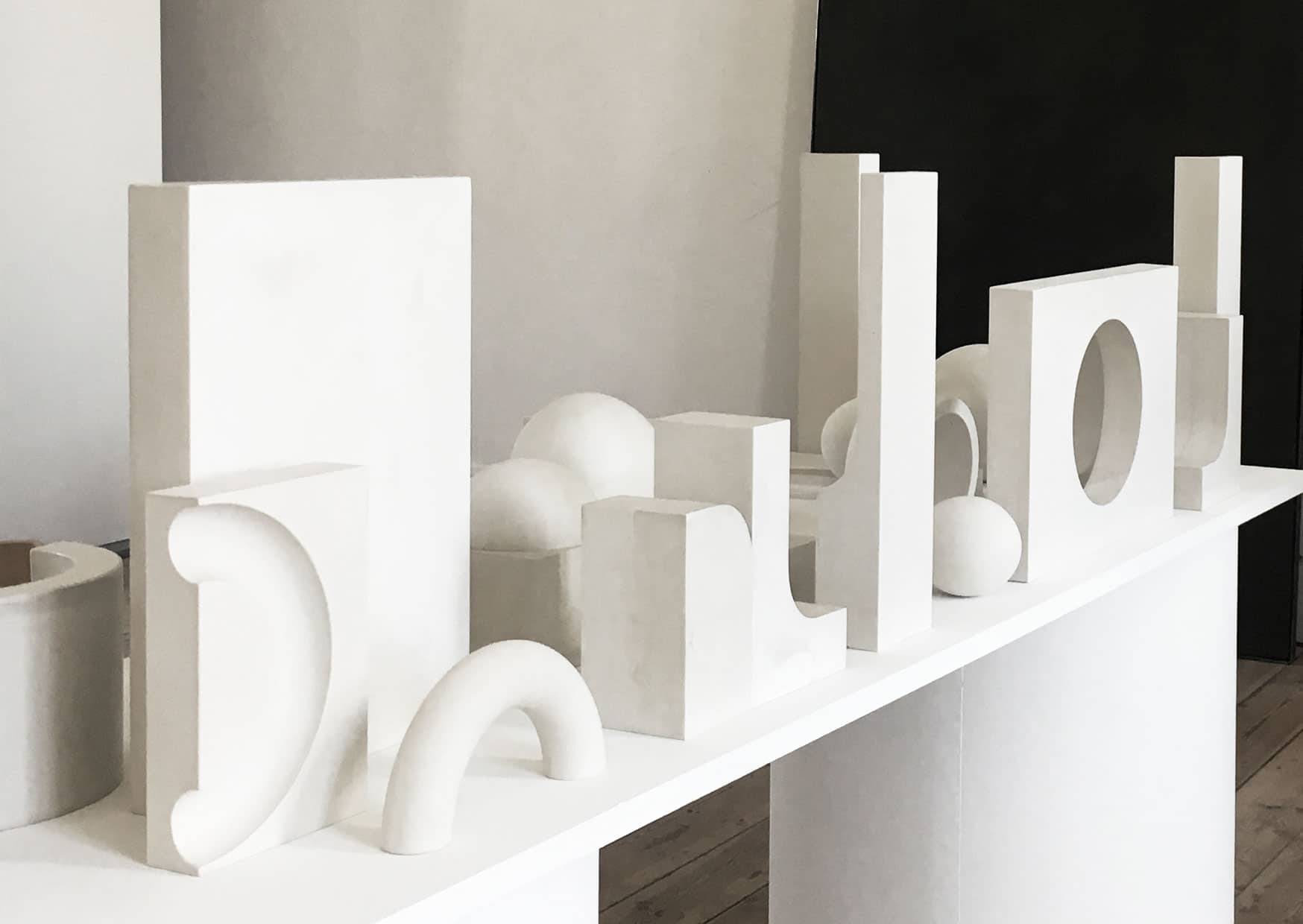
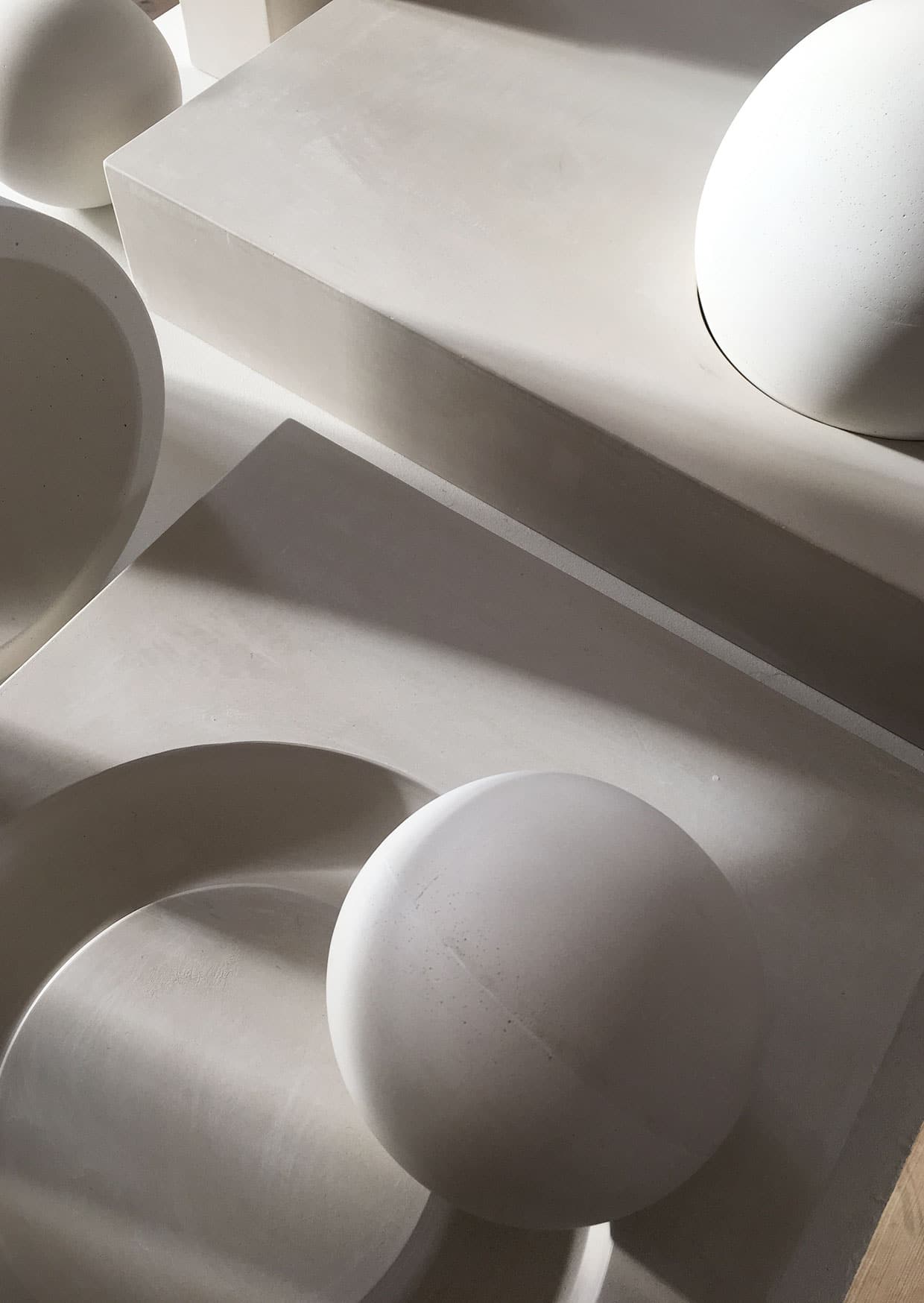
SOLID VOIDS
ART
With her Solid Voids series of objects Birgitte Due Madsen created sculptural forms that are related and respond to each other: concave and convex, spheres and squared, they play with the idea of presence and absence, positive and negative, solidity and voids. It’s rare to see plaster or gypsum used as an exhibition material but in the Danish ceramic artist’s deft hands it is a fluid expressive medium, moulded, shaped and cast, then polished to a velvety surface that begs to be touched.
“I’m really pleased to master a material that invites people to touch it. Contact with gypsum as an exhibition material is rare because it is considered worthy only as a sketching medium before a work is made in marble or other solid materials. But used as the final expression it surprises and attracts with its soft surface and deep reflections of light and shadow. It’s an almost sensual play with the laws of attraction. If you touch the object you get a more sensitive and sophisticated understanding of the craftsmanship behind it as well as the sheer beauty of the surface.”
“If one goes into the basic principles of geometry the possibilities of form are endless. I always work on a piece for a very long time, refining and refining. I trust my instincts and values. Everything has a history and is inscribed with historical contexts and classic disciplines. Making geometry expressive through sculptural form derives from looking at modernists such as Eero Saarinen and Jørn Utzon. By extracting the circular geometry in continued studies of curves I created a relational family of forms connected by a level of abstraction, as a three-dimensional geometry in the intersection between art and design.”
Solid Voids by Birgitte Due Madsen are featured in Case Study: Geometry and the Circles Portfolio in Ark Journal VOL II.
WORDS ARK JOURNAL
PHOTOGRAPHY Henriette Schou and the artist
CASE STUDY
— MONUMENTAL MONOCHROME
The enduring aesthetic of Danish furniture has always been entirely in step with other contemporary design practices, ceramics, glass, textiles, and particularly architecture.
LANDON METZ
Space is important to Landon Metz. In his art, pools of colour float across canvas leaving vast areas of unprimed fabric. In his studio the same sense of space – and the importance of the negative – is evident in the blanks between sparsely scattered furniture and plants.
CASE STUDY
— PERIOD PIECES
In the unique surroundings of the house created by Danish sculptor Rikard Axel Poulsen (1887-1972) furniture, lighting and homewares by contemporary designers exhibit their serene poise, the avant-garde flanked by the archaic to create layers of history.

SOLID VOIDS
art
With her Solid Voids series of objects Birgitte Due Madsen created sculptural forms that are related and respond to each other: concave and convex, spheres and squared, they play with the idea of presence and absence, positive and negative, solidity and voids. It’s rare to see plaster or gypsum used as an exhibition material but in the Danish ceramic artist’s deft hands it is a fluid expressive medium, moulded, shaped and cast, then polished to a velvety surface that begs to be touched.
“I’m really pleased to master a material that invites people to touch it. Contact with gypsum as an exhibition material is rare because it is considered worthy only as a sketching medium before a work is made in marble or other solid materials. But used as the final expression it surprises and attracts with its soft surface and deep reflections of light and shadow. It’s an almost sensual play with the laws of attraction. If you touch the object you get a more sensitive and sophisticated understanding of the craftsmanship behind it as well as the sheer beauty of the surface.”
“If one goes into the basic principles of geometry the possibilities of form are endless. I always work on a piece for a very long time, refining and refining. I trust my instincts and values. Everything has a history and is inscribed with historical contexts and classic disciplines. Making geometry expressive through sculptural form derives from looking at modernists such as Eero Saarinen and Jørn Utzon. By extracting the circular geometry in continued studies of curves I created a relational family of forms connected by a level of abstraction, as a three-dimensional geometry in the intersection between art and design.”
Solid Voids by Birgitte Due Madsen are featured in Case Study: Geometry and the Circles Portfolio in Ark Journal VOL II.
WORDS ARK JOURNAL
PHOTOGRAPHY Henriette Schou and the artist


